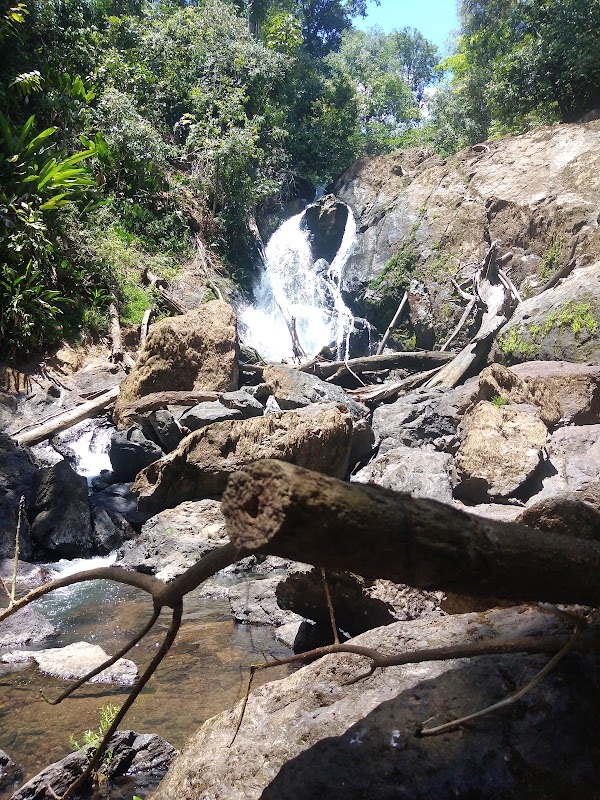Best Coastal Hiking Trails Around Golfo Dulce: Exploring Beach and Forest Edges of Osa Peninsula
Explore the diverse coastal hiking trails around Golfo Dulce on Costa Rica’s Osa Peninsula, where rainforest meets beach in a dynamic landscape. This guide offers practical insights and vivid trail descriptions to prepare you for an unforgettable adventure along beach edges and forest paths.
Start Early to Avoid Heat and Afternoon Rain
Begin your hike shortly after sunrise to enjoy cooler temperatures and reduce the risk of afternoon tropical showers that can make trails slippery.
Wear Sturdy Footwear with Good Traction
Expect a mix of wet sand, rocks, and muddy forest floor; hiking boots or shoes with aggressive tread will keep you steady.
Bring Sufficient Water and Purification Tablets
Hydration is key in humid tropical environments. Carry enough water and purification methods to refill safely mid-trail if needed.
Check Tides for Beach Sections
Some parts of the trails along the beach may be impassable during high tide. Consult local tide charts or guides before setting off.
Best Coastal Hiking Trails Around Golfo Dulce: Exploring Beach and Forest Edges of Osa Peninsula
Golfo Dulce, on Costa Rica's Osa Peninsula, offers a rare chance to move through landscapes where ocean and rainforest edge into one another, each pushing and pulling like eager neighbors. The best coastal trails here thread a careful line between jagged shorelines, dense tropical forests, and the constant hum of wildlife that claims this place as its own.
Start with the Bahía Drake Coastal Trail — a 7-kilometer trek hugging the beach and climbing through occasional forest canopies. Its elevation gain is moderate, around 200 meters, but the terrain demands sturdy footwear: expect damp sands, rocky outcrops, and slippery roots invited by the rainforest’s embrace. The trail challenges you with surprise river crossings, where you meet rivers daring you to find balance without losing your footing. Morning is prime hiking time; the sun hasn’t yet coaxed the humidity’s full weight, and the trail’s natural sounds awaken with you.
Closer to town, the Playa Ventanas Loop offers a shorter, more accessible 4-kilometer route that balances beach strolling with forest edge exploration. Expect gentle undulations rather than steep climbs, but watch for tides that can shift the path look and footing. The ocean here is a living force, currents pushing and pulling on tide pools and rocky bends, creating windows to spot small crabs and fish navigating their microhabitats.
For those looking to extend their adventure, the trail connecting Playa Escondida and Playa Matapalo stretches about 10 kilometers. It weaves through coastal mangroves, sandy beaches, and thick jungle fringes, with an elevation change of about 300 meters. Each step asks you to adjust: mud can challenge your boots, while tree roots claw at stable ground. The canopy provides intermittent shade, but the sea breeze waits on the ridge to reward your climb.
Preparation is straightforward but essential—carry adequate water with purification options, footwear that grips across wet and dry surfaces, and timing that avoids midday heat and rainy bursts. Mosquito repellent and a light rain jacket can make the difference between a slog and a smooth excursion. Trust the land’s fierce independence and respect its rhythms, and this coastal stretch will offer you close and active communion with both beach and forest.
These hikes are practical invitations—paths where the natural world remains fiercely itself, transforming constantly, inviting all levels of adventurers to witness a coastline alive with edge-of-forest tension and calm ocean views.
Nearby Trips
All Adventures
Boat Charters
Water Activities
Adventures near Puerto Jiménez
Discover the unique and memorable adventures that make Puerto Jiménez special.
Frequently Asked Questions
Are the coastal trails suitable for children or beginners?
Shorter trails like Playa Ventanas Loop have gentle terrain and minimal elevation gain, making them accessible to families and beginners with appropriate supervision.
Can I find freshwater sources along the trails?
Some streams cross the trails, especially during the rainy season, but it’s best to carry your own water with purification options, as natural sources might be unsafe or contaminated.
Are there any dangerous wildlife species I should be aware of?
The forest edges can hide snakes and insects; stay on marked trails, watch your step, and use insect repellent. Jaguars and other large mammals are elusive and rarely encountered but respect all wildlife boundaries.
Is it better to hike during low tide or high tide?
Low tide is best for coastal sections to avoid submerged paths and fully explore tide pools and beach stretches without rushing.
Are guided hikes available in the Golfo Dulce area?
Yes, local guides offer tours that combine wildlife spotting, cultural insights, and safer passage through remote or less-known trail sections.
How do I minimize environmental impact while hiking here?
Stick to established trails, avoid disturbing wildlife, pack out all trash, and choose biodegradable products for hygiene and insect protection to preserve this sensitive ecosystem.
Recommended Gear
Hiking Boots
Protects your feet on rocky, muddy, and slippery surfaces common to coastal and forest trails.
Water Bottle with Purification Tablet or Filter
Ensures safe hydration during long hikes where potable water sources are scarce.
Light Rain Jacket
Keeps you dry from sudden tropical downpours without adding excessive weight or heat.
Insect Repellent
Protects you from mosquitoes and other insects active in humid conditions and forested areas.
Local Insights
Hidden Gems
- "Mirador Isla del Caño offers rare panoramic views of the coastline and Golfo Dulce bay."
- "Secluded tide pools along Playa Olo’s rocky edges reveal colorful marine life if visited at low tide."
Wildlife
- "Scarlet macaws glide overhead, their calls piercing the forest canopy."
- "Howler monkeys swing through the trees, setting a rhythmic soundtrack to your hike."
- "Sea turtles often nest along quiet beaches nearby during nesting season."
History
"The Osa Peninsula was an important area for indigenous Chorotega peoples. Early conservation efforts here helped establish Corcovado National Park, a key part of protecting this biologically rich region."

